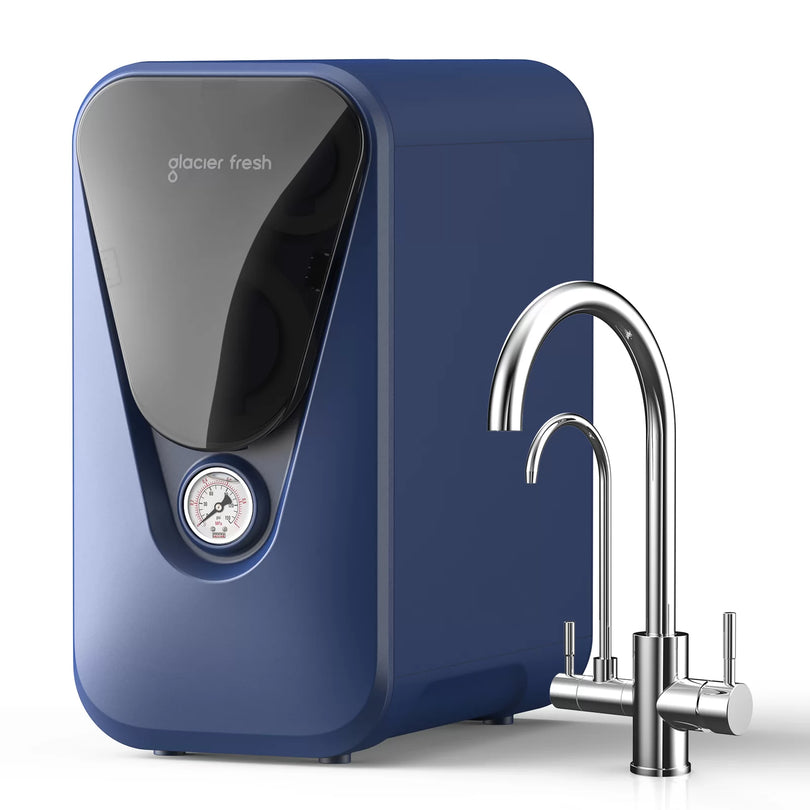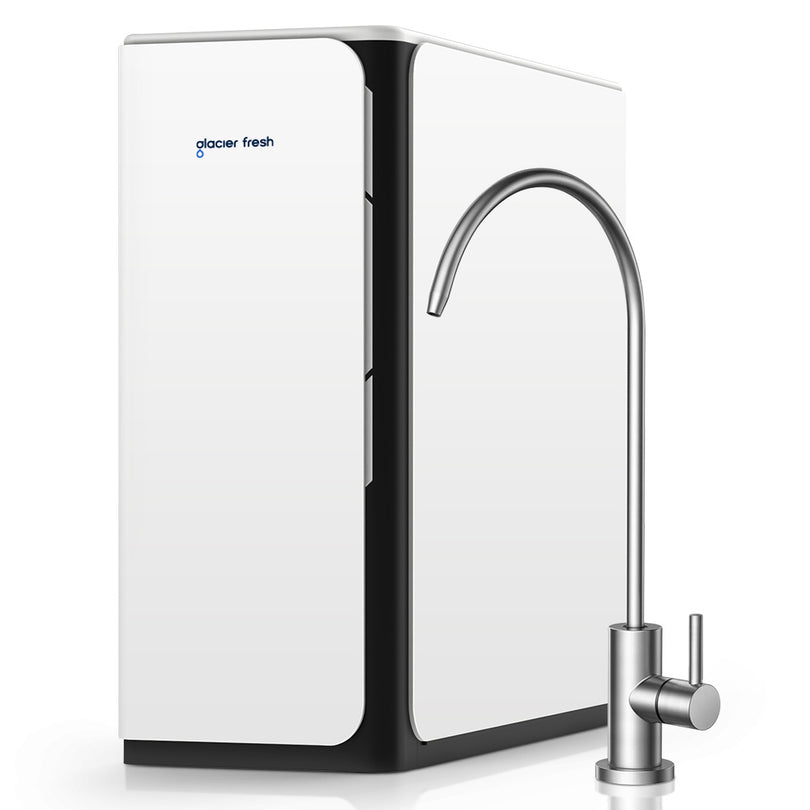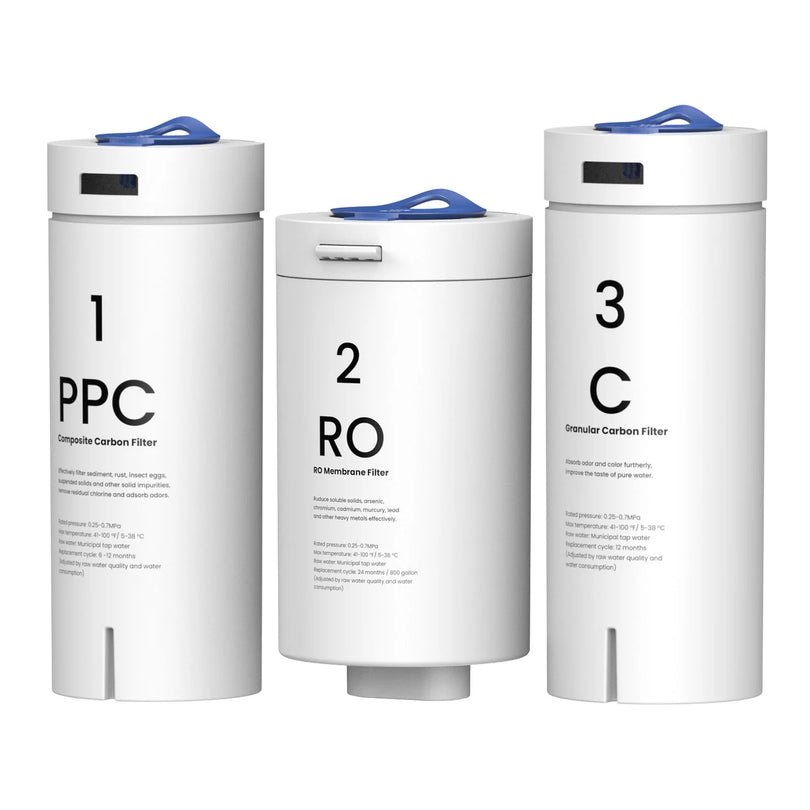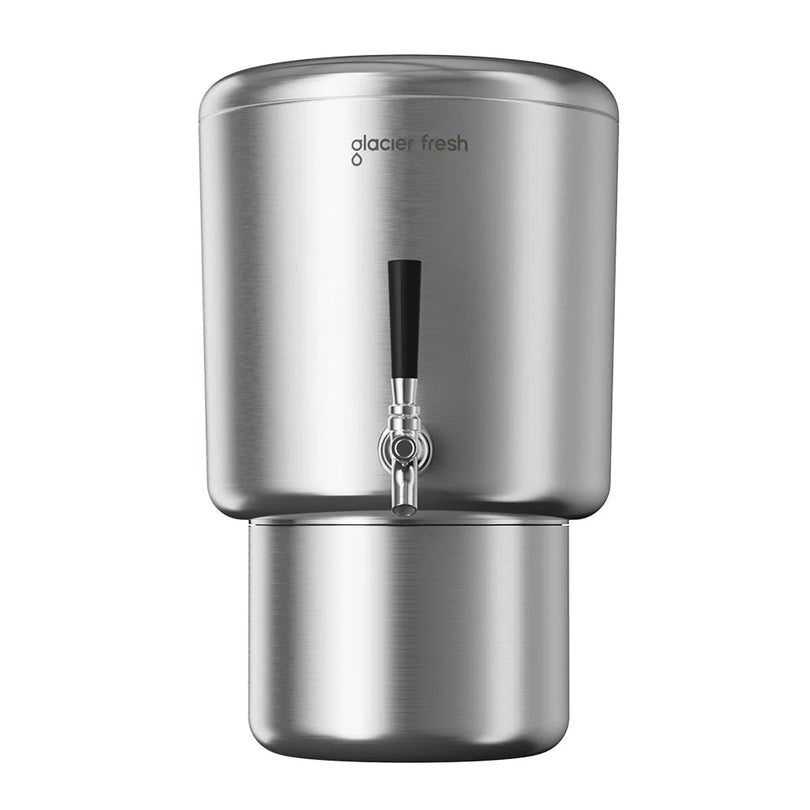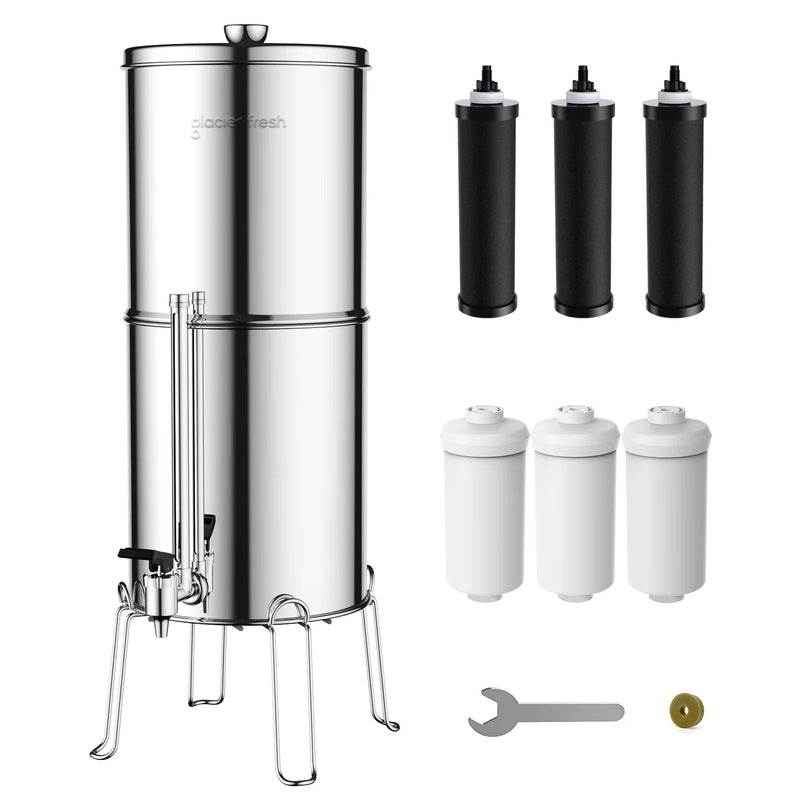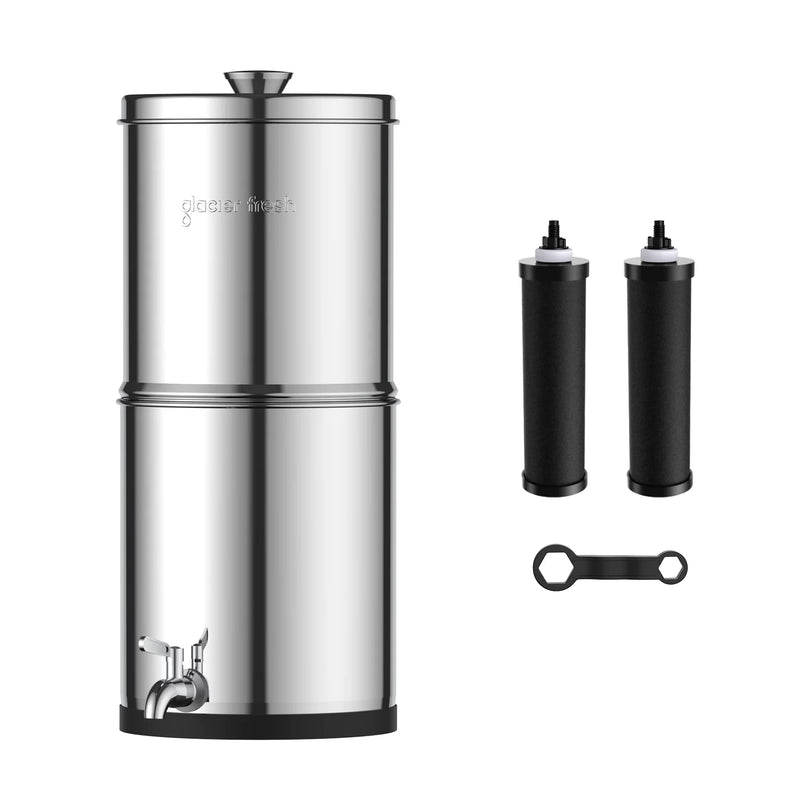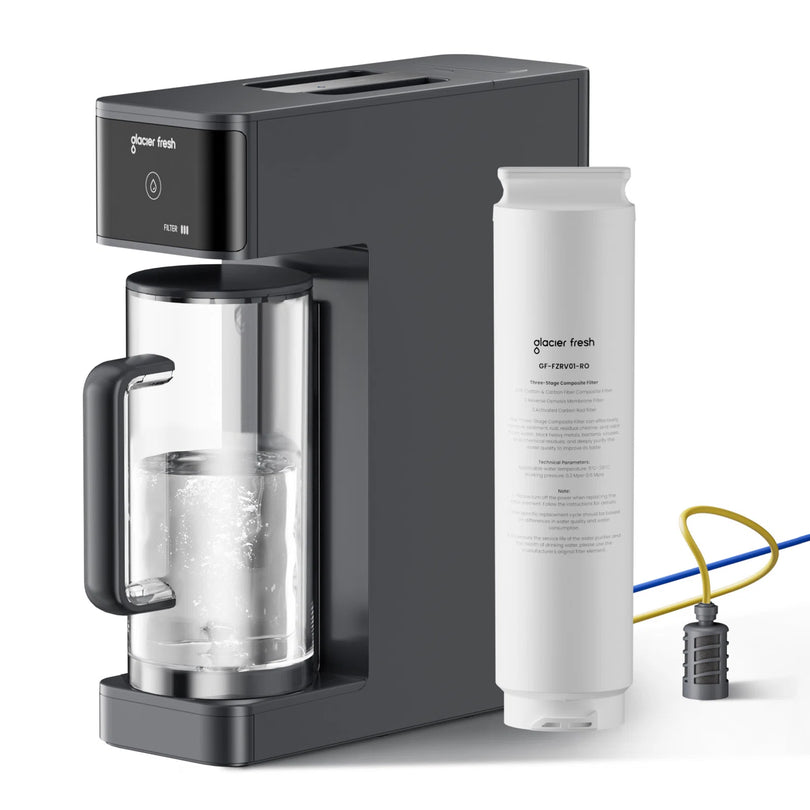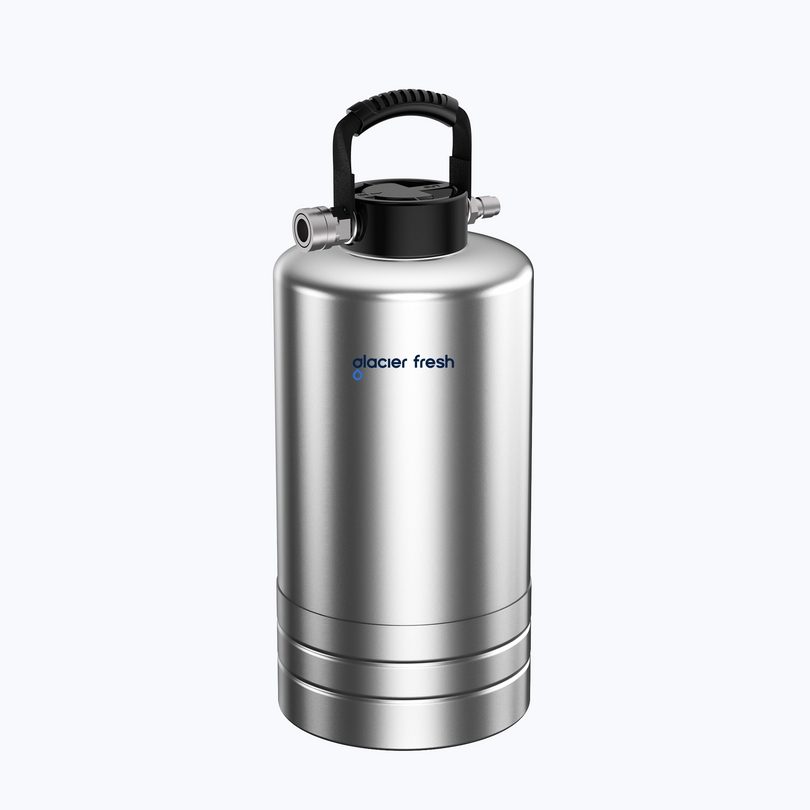Table of Contents:
Understanding water composition
The key minerals found in water
The health implications of minerals in water
Water hardness vs. softness: which is the difference?
What are the safe mineral levels in drinking water?
How to manage the mineral content in water
FAQs
Conclusion
Water is often referred to as the essence of life, and for good reason. It’s vital for hydration, digestion, and overall health. But have you ever wondered what’s in your water beyond the basic H2O molecules? Water isn’t just pure hydrogen and oxygen—it’s also a carrier of essential minerals that can impact your health, home, and environment.
In this blog, we’ll dive into the minerals found in water, their sources, benefits, and potential concerns, and how you can make informed choices about the water you consume.
Understanding water composition

Not all water is created equal. While pure water consists solely of hydrogen and oxygen, natural sources like rivers, lakes, and groundwater contain various dissolved minerals. These minerals enter the water through natural processes, such as water flowing over rocks and soil or through human activities like agriculture, industrial discharge, and even plumbing systems.
Water treatment processes can also alter mineral content. For example, some municipalities add fluoride to water for dental health, while others use filtration systems to remove impurities. The result is that the water you drink can vary widely in mineral composition depending on its source and treatment.
The key minerals found in water

Water can contain various minerals, each with its benefits and potential drawbacks. Here are some of the most common minerals found in water:
1. Calcium
Calcium is one of the most abundant minerals in water, especially in areas with limestone bedrock. It’s essential for strong bones and teeth and plays a role in muscle function and nerve signaling. However, high calcium levels can contribute to water hardness, leading to scale buildup in pipes and appliances.
2. Magnesium
Magnesium is another key mineral often found alongside calcium. It supports muscle and nerve function, helps regulate blood pressure, and is involved in hundreds of biochemical reactions in the body. Like calcium, magnesium contributes to water hardness, but it’s generally considered beneficial for health.
3. Sodium
Sodium is a double-edged sword. While it’s necessary for maintaining fluid balance and nerve function, excessive sodium intake is linked to high blood pressure and cardiovascular issues. Sodium can enter water through natural sources like salt deposits or human activities like road salt runoff and water softening systems.
4. Potassium
Potassium is less common in water but is still present in trace amounts. It’s crucial for heart health and muscle function. While water isn’t a primary source of potassium, every little bit helps contribute to your daily intake.
5. Iron
Iron is a trace mineral that can leach into water from soil or pipes. While small amounts are essential for transporting oxygen in the blood, too much iron can cause a metallic taste and stain laundry and plumbing fixtures.
6. Fluoride
Fluoride is often added to public water supplies to prevent tooth decay. While it’s beneficial for dental health, excessive fluoride can lead to dental fluorosis or other health concerns, making it a topic of ongoing debate.
7. Zinc
Zinc is another trace mineral that occasionally appears in water. It supports immune function and wound healing but is rarely present in significant amounts.
The health implications of minerals in water
The minerals in water can positively and negatively affect your health. Here’s a closer look at the benefits and risks:
Benefits of mineral-rich water
- Improved hydration: Minerals like calcium and magnesium enhance water’s ability to hydrate your body.
- Dietary supplementation: For people with mineral deficiencies, drinking mineral-rich water can help meet daily nutritional needs.
- Bone and heart health: Calcium and magnesium benefit bone density and cardiovascular health.
Risks of excess minerals
- Kidney stones: High calcium levels can increase the risk of kidney stones in susceptible individuals.
- Cardiovascular issues: Excessive sodium intake is linked to high blood pressure and heart disease.
- Aesthetic concerns: High iron levels can stain sinks and laundry, while excess magnesium can have a laxative effect.
Comparing water types
- Tap water: The mineral content of tap water varies by location. Some areas have naturally hard water, while others have soft water.
- Bottled mineral water: Many brands market their water for its specific mineral profile, which can be a convenient way to get additional nutrients.
- Filtered/demineralized water: While filtration removes impurities, it can also strip water of beneficial minerals. Some systems include remineralization steps to address this.
Water hardness vs. softness: which is the difference?
Have you ever wondered about the difference between hard and soft water? Let's break it down for you. Hard water contains more minerals, like calcium and magnesium, while soft water has undergone treatment to remove these minerals.

What are the safe mineral levels in drinking water?

Balance is key when it comes to minerals in drinking water. While minerals like calcium, magnesium, and fluoride offer health benefits, excessive amounts can pose risks.
Regulatory bodies like the World Health Organization (WHO) and the Environmental Protection Agency (EPA) have established guidelines to ensure safe mineral levels in drinking water. For example, the WHO recommends a maximum of 200-300 mg/L of calcium and 50-150 mg/L of magnesium for optimal taste and health benefits. Sodium levels should generally stay below 20 mg/L to avoid cardiovascular risks, though this can vary based on individual health conditions. Fluoride, added to prevent tooth decay, is typically maintained at 0.7-1.5 mg/L, with higher concentrations risking dental or skeletal fluorosis.
These guidelines help ensure that drinking water is safe and beneficial, but it’s always a good idea to test your water if you’re unsure about its mineral content.
How to manage the mineral content in water
Depending on your needs, you may want to adjust the mineral content of your water:
- Reducing minerals: Water softeners and reverse osmosis systems can remove excess calcium and magnesium.
- Adding minerals: Remineralization filters or electrolyte supplements can enhance the mineral content of filtered or demineralized water.
- Personalized choices: You can tailor your water intake for specific health concerns, such as a low-sodium diet.
FAQs
Can water alone meet my mineral needs?
While water can contribute to your daily mineral intake, it’s not a substitute for a balanced diet rich in fruits, vegetables, and whole grains.
Does bottled water outperform tap water?
It depends on the brand and source. Some bottled waters have higher mineral content, but tap water is often just as safe and more environmentally friendly.
Conclusion
Water is more than just H2O—it’s a complex mixture of minerals that can impact your health and daily life. From calcium and magnesium to sodium and fluoride, the minerals in water play a vital role in hydration, nutrition, and even household maintenance. By understanding what’s in your water and how it affects you, you can make informed choices to optimize your health and well-being.
So, the next time you take a sip of water, remember: it’s not just water—it’s a mineral-rich elixir as unique as its environment. Visit Glacier Fresh to find more water filtration solutions.


